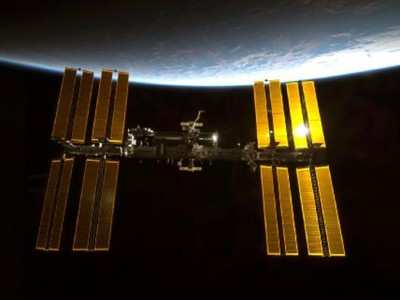Fri, Jul 16, 2010
NASA Picks Nine Experiments In Program's Inaugural Year
 NASA has selected nine experiments, designed by students at
seven schools, for astronauts to perform on the International Space
Station this summer. NASA selected the proposals from among 132
received for the new Kids in Micro-g! Program.
NASA has selected nine experiments, designed by students at
seven schools, for astronauts to perform on the International Space
Station this summer. NASA selected the proposals from among 132
received for the new Kids in Micro-g! Program.
This is the pilot year for the program, a student experiment
design challenge geared toward grades five through eight. Its
purpose is to give students a hands-on opportunity to design
experiments or simple demonstrations for testing both in the
classroom and in the station's microgravity environment. The
winners were chosen by a team of representatives from NASA's 10
field centers.
"What a wonderful experience for these kids to have their
experiments carried out in space and by astronauts," said Mark
Severance, International Space Station National Laboratory
Education projects manager at NASA's Johnson Space Center in
Houston. "This gives students the chance to see what happens
differently, other than in the classroom, when their experiment is
performed in an environment that is not on Earth."
The schools chosen to participate are:
- National Winner and NASA Glenn Research Center Regional Winner
Brownell Middle, Grosse Point Farms, MI.
- National Runner-up and NASA Kennedy Space Center Regional
Winner Vaughan Elementary, Powder Springs, GA.
- NASA Ames Research Center Regional Winner Hamlin School, San
Francisco, CA.
- NASA Goddard Space Flight Center Regional Winners (tie) East
Hartford-Glastonbury Magnet, East Hartford, CT and Carl Sandburg
Middle, Old Bridge, NJ.
- NASA Kennedy Space Center Regional Winner Windy Ridge
Elementary, Orlando, FL.
- NASA Langley Research Center Regional Winner Virginia Academy,
Ashburn, VA.

The experiments will study the effect of weightlessness on
various subjects such as humans and liquids and other materials, as
well as what the environment reveals about the laws of physics. The
experiments are expected to have observably different results in
microgravity than when performed in the classroom.
The apparatus for the experiments was constructed using the same
materials as a tool kit previously provided to astronauts on the
space station. The materials in the tool kit are commonly found in
the classroom and used for science demonstrations. The proposed
experiments or demonstrations are required to take no more than 30
minutes to set up, run and take down.
This fall, the program will ask for proposals for 2011.
More News
Pilot Also Reported That Due To A Fuel Leak, The Auxiliary Fuel Tanks Were Not Used On June 4, 2025, at 13:41 eastern daylight time, a Piper PA-23, N2109P, was substantially damage>[...]
From 2023 (YouTube Edition): Reflections on War’s Collective Lessons and Cyclical Nature The exigencies of war ought be colorblind. Inane social-constructs the likes of racis>[...]
Pilot Reported That He Was Unfamiliar With The Single Seat Amateur-Built Airplane And His Intent Was To Perform High-Speed Taxi Testing Analysis: The pilot reported that he was unf>[...]
From 2023 (YouTube Edition): First Kits to Ship October 2023 Having formerly resurrected the storied shape of the Ryan ST—in effigy, anyway—Montrose, Colorado-based Tim>[...]
Performance-Based Navigation (PBN) [ICAO] Area navigation based on performance requirements for aircraft operating along an ATS route, on an instrument approach procedure or in a d>[...]
 NTSB Prelim: Piper PA-23
NTSB Prelim: Piper PA-23 Classic Aero-TV: One Mans Vietnam
Classic Aero-TV: One Mans Vietnam NTSB Final Report: Capella Aircraft Corp FW1C50
NTSB Final Report: Capella Aircraft Corp FW1C50 Classic Aero-TV: Timber Tiger Touts Curtiss Jenny Replicas
Classic Aero-TV: Timber Tiger Touts Curtiss Jenny Replicas ANN's Daily Aero-Term (07.04.25): Performance-Based Navigation (PBN) [ICAO]
ANN's Daily Aero-Term (07.04.25): Performance-Based Navigation (PBN) [ICAO]




